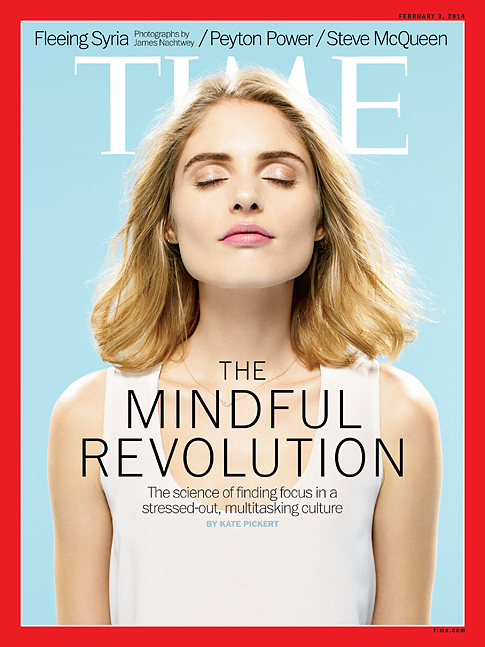
(2 of 8)
There are no signs that the forces splitting our attention into ever smaller slices will abate. To the contrary, they're getting stronger. (Now arriving: smart watches and eyeglasses that will constantly beam notifications onto the periphery of our vision.) Already, many devotees see mindfulness as an indispensable tool for coping--both emotionally and practically--with the daily onslaught. The ability to focus for a few minutes on a single raisin isn't silly if the skills it requires are the keys to surviving and succeeding in the 21st century.
REWIRING YOUR BRAIN
With Tiny Bits of raisin still stuck in my teeth, I look around at the 15 other people in my MBSR class, which will meet every Monday evening for eight weeks. My classmates cite a wide variety of reasons they have plunked down $350 to learn about meditation and mindfulness. One 20-something blond woman said back-to-back daily work meetings meant she couldn't find time to pause and reset; she had been prescribed the anti-anxiety drug Klonopin. A mother on maternity leave said "being present" with her infant seemed more important than ever, but she was struggling. One man, a social worker, said he needed help dealing with the stress of working with clients trying to get their lives on track.
Although I signed up to learn what mindfulness was all about, I had my own stressors I hoped the course might alleviate. As the working parent of a toddler, I found life in my household increasingly hectic. And like so many, I am hyperconnected. I have a personal iPhone and a BlackBerry for work, along with a desktop computer at the office and a laptop and iPad at home. It's rare that I let an hour go by without looking at a screen.
Powering down the internal urge to keep in constant touch with the outside world is not easy. At the start of each two-hour MBSR class, our teacher, a slight woman named Paulette Graf, hit two small brass cymbals together to indicate we should begin meditating. During this agonizingly frustrating period, which lasted up to 40 minutes, I would try to focus on my breath as Paulette advised, but I felt constantly bombarded by thoughts about my family, random sounds in the room and even how I would translate each evening's session into this story.
One evening, we were introduced to mindful walking. In our small meeting room, we formed a circle and paced together. "Feel your heel make contact with the floor, then the ball of your foot," said Paulette. "One foot, then the other." Anxious feelings about planning the week ahead and emails in my inbox that might be waiting for replies crept into my head even though my phones were off and tucked away. Mindfulness teachers say this kind of involuntary distraction is normal and that there's no point in berating ourselves for mentally veering away from the task at hand. Rather, they say, our ability to recognize that our attention has been diverted is what's important and at the heart of what it means to be mindful.
Some of this may sound like a New Age retread of previous prescriptions for stress. Mindfulness is rooted in Eastern philosophy, specifically Buddhism. But two factors set it apart and give it a practical veneer that is helping propel it into the mainstream.
